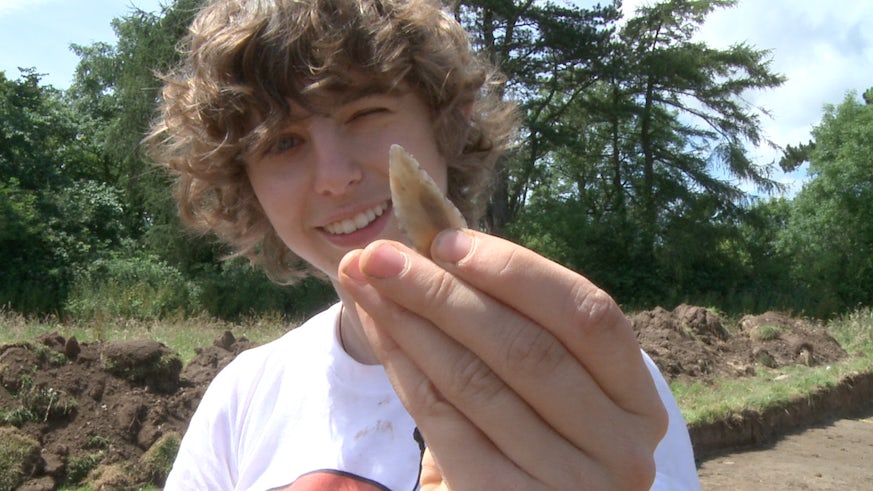Digging the ‘Diff
22 June 2015

Local community set to delve deeper into Cardiff's 6,000 year old history
A major excavation of a prehistoric Welsh hillfort will get underway today (22 June), with local residents at the centre of efforts to uncover the prehistoric origins of Cardiff.
Over the next four weeks, around 200 members of the Caerau and Ely community will work alongside Cardiff University archaeologists to excavate Caerau Hillfort, one of Wales' most significant yet least well-known heritage sites.
This year's dig follows hugely successful excavations
in 2013 and 2014, during which remarkable discoveries were made revealing
occupation at the site to have stretched from the Bronze Age through to the
late Roman era and beyond.
Among the finds were five large Iron Age roundhouses, a roadway, extensive
assemblages of Iron Age and Roman pottery, and a decorated Iron Age glass bead.
Before the establishment of the CAER heritage project – which is a collaboration between the University's School of History, Archaeology and Religion and community organisation Action Caerau and Ely (ACE) - the hillfort had largely been overlooked by archaeologists, meaning little was known about its significance, with much of its magnificent ramparts hidden behind trees.
Until 2014, archaeologists were unaware that the site was occupied as far back as the Stone Age - predating the construction of the hillfort by several thousand years. But fascinating archaeological discoveries at last summer's excavation uncovered a wealth of Neolithic finds, including a number of flint tools and weapons dating to around 3,600 BC.
The excavations form one part of the project, which aims to provide the community with deeper insight into their heritage and the area's fascinating past, while simultaneously enabling them to gain new skills and build confidence and community cohesion.
Over the last three years, the project has seen more than 2,000 community members - including school pupils, young people facing exclusion, the long-term unemployed and retired people – co-working with University researchers to uncover vital details about their prehistoric ancestors.
Community members are active participants at every stage in the process, including excavation, geophysical surveying, post-excavation analysis, as well as supporting creative artistic and historical research initiatives.
Project co-director, Dr Dave Wyatt, from Cardiff University's School of History, Archaeology and Religion, said: "Last year some mind-blowing discoveries were made, which pushed back the origins of Cardiff deep into time, but we believe we're still just scratching the surface of this incredible site, so who knows what will be uncovered this year.
"The project's objective has always been using archaeology to help the people of Caerau and Ely connect with their heritage, making it relevant to the present day as well as educating and challenging stereotypes that are unfairly attached to this part of Cardiff.
"But its significance is far-reaching in other ways, too. In terms of archaeological exploration and discovery, the past four years have far surpassed our expectations, with some internationally-significant finds helping us piece together thousands of years of history.
"Given that the site is five hectares in size, we're hopeful that the best is yet to come, and there's a palpable sense of anticipation among the research team. This year, side by side with the local community, we hope to be at the forefront of the discovery of further prehistoric archaeological gems."
Olly Davies, from Cardiff University's School of History, Archaeology and Religion, who also co-directs the project, said: "During last year's dig more than 2,000 local people visited the excavations with hundreds involved in the actual archaeological work itself. Our challenge this year is to attract twice as many visitors and to get the people of South Wales to value this amazing site and the remarkable communities that live in its shadow.
"The CAER heritage project takes an inclusive and open access policy towards archaeological excavation and welcomes the contribution and involvement of all. As always, we warmly welcome people to come along simply to visit or to roll up their sleeves for this important fourth season. People can find out more about how to get involved at the CAER heritage project website or contact us on Facebook or Twitter."